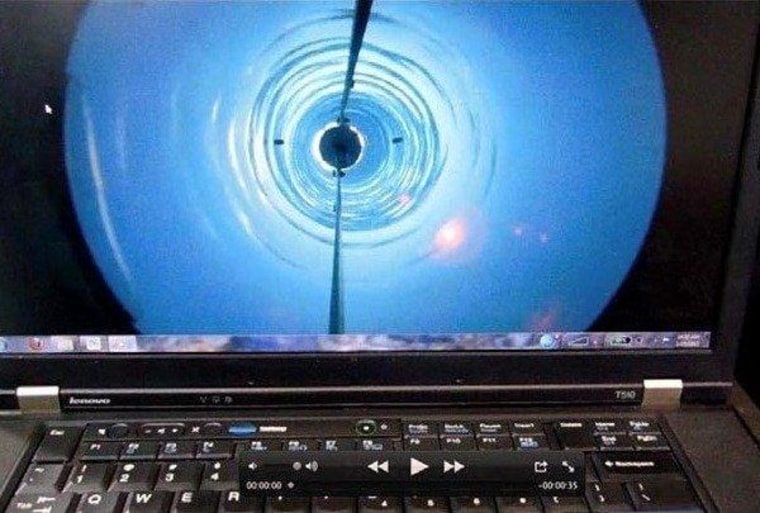The first signs of potentially exotic life have been spotted in a sample of water drawn from Antarctica's hidden Lake Whillans, a half-mile beneath the surface, according to reports from the scene.
The telltale green glow of cells stained with a DNA-sensitive dye could be seen when water from the lake was put under the microscope on Monday, Discover Magazine's Crux blog reported. "It was the first evidence of life in an Antarctic subglacial lake," science journalist Douglas Fox reported for The Crux. Fox is an embedded journalist reporting from Lake Whillans under the auspices of a National Science Foundation program.
The U.S. scientists in charge of the project to drill into Lake Whillans — known as the Whillans Ice Stream Subglacial Access Research Drilling, or WISSARD — will be more circumspect: They'll have to demonstrate that the green-glowing cells are truly alive and capable of growing in culture. They'll also conduct tests to make sure that the microbes are indigenous to the lake, rather than the result of contamination from the drilling operation.
Last year, Russian scientists analyzed water from Lake Vostok, an even deeper and bigger subglacial lake beneath Antarctica's Vostok Station, but the only microbes they found in the sample were surface-dwelling species that may have come from contaminated drilling chemicals rather than the lake itself.
During the current Antarctic research season, the Russians resumed their drilling at Vostok. They said earlier this month that they had reached transparent lake ice at a depth of 3.4 kilometers (2.1 miles). Since then, they've reported retrieving "fresh frozen" ice cores from slightly deeper levels.
The Russian and U.S. teams are drilling into the lakes in hopes of finding evidence of life forms that could have been living in the dark for thousands of years, or even millions of years. Theoretically, such organisms could live off the minerals in deep-buried rock, plus oxygen dissolved in the lake water.
The Whillans Ice Stream is a glacial river that pushes ice from the West Antarctic Ice Sheet into the Ross Ice Shelf. Lake Whillans lies about 800 meters (0.5 miles) beneath the ice, less than 400 miles (640 kilometers) from the South Pole. Just this past weekend, the WISSARD team reported that their borehole connected with the lake after several days of drilling.
Fox quoted scientists as saying that Lake Whillans is just 5 to 6 feet (1.5 to 2 meters) deep, as opposed to the 20 to 30 feet (6 to 9 meters) that was expected. The first water samples that were brought up contained the ancient fossils of dead diatoms — tiny marine creatures that are thought to have been pushed down into the lake from West Antarctica.
The study of Lake Whillans and other subglacial lakes should shed light on Antarctica's climate history, as well as the long-term interaction between the continent's ice and the water and rocks that lie beneath. The discovery of novel life forms could open up an entirely new frontier for biologists. And even if the organisms found in the lakes aren't all that unusual, the drilling operations could set the stage for future missions to the ice-covered moons of Jupiter and Saturn, where similarly challenging conditions for subsurface life are thought to exist.
More about the mysteries beneath the ice:
- Saturnian moon Enceladus eyed for sample return mission
- Underground ocean goes deep on Jovian moon Europa
- Mission to drill into Antarctica's Lake Ellsworth suspended
For more about the WISSARD project at Lake Whillans, check out this report from The Antarctic Sun.
Alan Boyle is NBCNews.com's science editor. Connect with the Cosmic Log community by "liking" the log's Facebook page, following @b0yle on Twitter and adding the Cosmic Log page to your Google+ presence. To keep up with Cosmic Log as well as NBCNews.com's other stories about science and space, sign up for the Tech & Science newsletter, delivered to your email in-box every weekday. You can also check out "The Case for Pluto," my book about the controversial dwarf planet and the search for new worlds.
